Introduction
Nature is so wide and far beyond our imagination that we know very little about the creatures and organisms that live in it. Different types of small and big creatures are a part of it and each creature plays a significant role in it. Every creature including humans has its role and place in the ecosystem that leads to a smooth flow of it. Bristle worms are one such small part of this big universe. You can find them in your tank, pool, and aquarium and their weird appearance can scare people. So in this article, we are going to talk about all the things you need to know about them like if they are dangerous or not, the role they play in the ecosystem, places they can be found, and all the ways by which you can get rid of them. Article about Bristle Worms
What are Bristle Worms?
We might have seen these worms a lot of times in our backyard or fish tank but are usually blank about them. They are called Bristle worms and are also known as polychaetes. They belong to the family of annelid worms and being marine creatures they are usually found in water. And they are part of Animalia kingdom. They look like earthworms with fringes all around them. They are of bright warm-toned colours like red, orange, or yellow. Bristle worms are segmented worms with bristly tufts extending from each of their segments. They can size between one to six inches long and can grow as long as 24 inches. They have many different segments in their body and blood is supplied to their body through three main blood vessels named ventral blood vessels, Dorsal blood vessels, and lateral blood vessels.
These worms are strictly aquatic annelids and are found in water environments all around the world. And are present from abyssal depths to shallow estuaries and rocky shores, and even free swimming in open water.
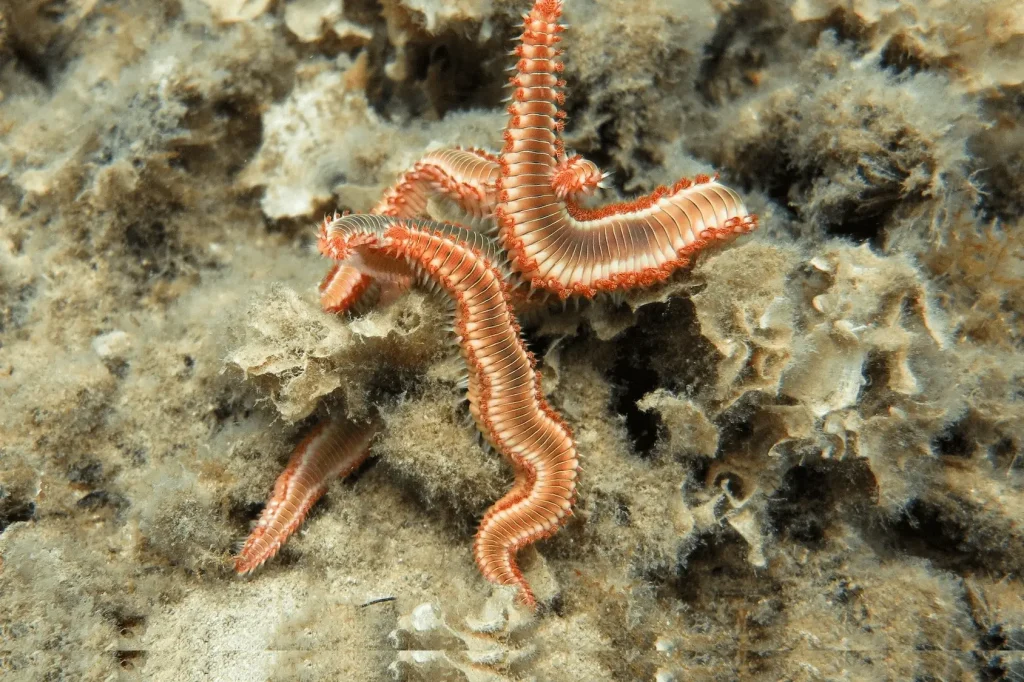
What are Bristle worms?
Have a look at the anatomy of the polychaetes that will help you in understanding all the organs that these creatures have and will also give you a glimpse into the working of their body.
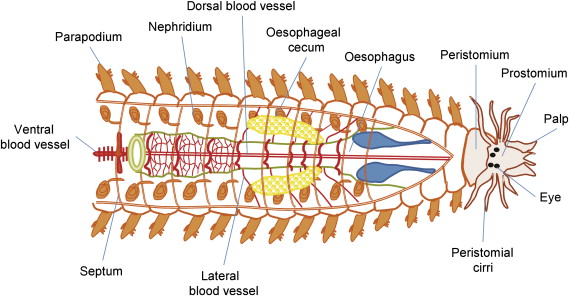
Are bristle worms harmful to humans?
Bristle worms can be easily found in our surroundings and because of their ugly and creepy appearance, it is completely normal to get scared of them. But the question that arises now is that are they harmful to humans or not. There are many different types of bristle worms but basically, they are divided into two broad categories venomous and non-venomous. As clear by the name that venomous creatures are harmful to humans and other living creatures and that is why they should not be touched. Other than that the other type which is non-venomous are not harmful to humans but one must still be very careful around them.
They are undoubtedly very dangerous but still can not do much harm to humans. So if any situation arises in which you need to pick them or touch them then you should try to cover your hands but still, it is possible that they can sting you.
Should I get rid of Bristle worms?
After knowing if they are harmful or not, the question that arises now is should we get rid of them or not. If they are poisonous then you should get rid of them because they can harm you. And if they are not poisonous then there is no harm in keeping them. They can be proven beneficial if they are in your tank because they play a huge role in cleaning your tank and keeping the water clean. But sometimes they can attack animals in the tank then there is an absolute need to get rid of them. And the other thing is that they can look very ugly and creepy and can scare others.
And if they are in some water body or open space then there is no need to get rid of them because they play the scavengers and help in keeping the environment clean.
What kills Bristle worms?
Sometimes it becomes really important to get rid of bristle worms because they can be harmful at times. So if there are bristle worms in your fish tank and you want to get rid of them then you can adapt a lot of ways like you can make a worm trap for them by using a bottle. Other than that you can keep some special type of fish in your fish tank that will help in eating these worms. Fishes that you can keep in your tank are:
- Six line wrasse.
- Longnose hawkfish.
- Flame hawkfish.
- Neon dottyback.
- Orchid dottyback.
- Melanurus wrasse.
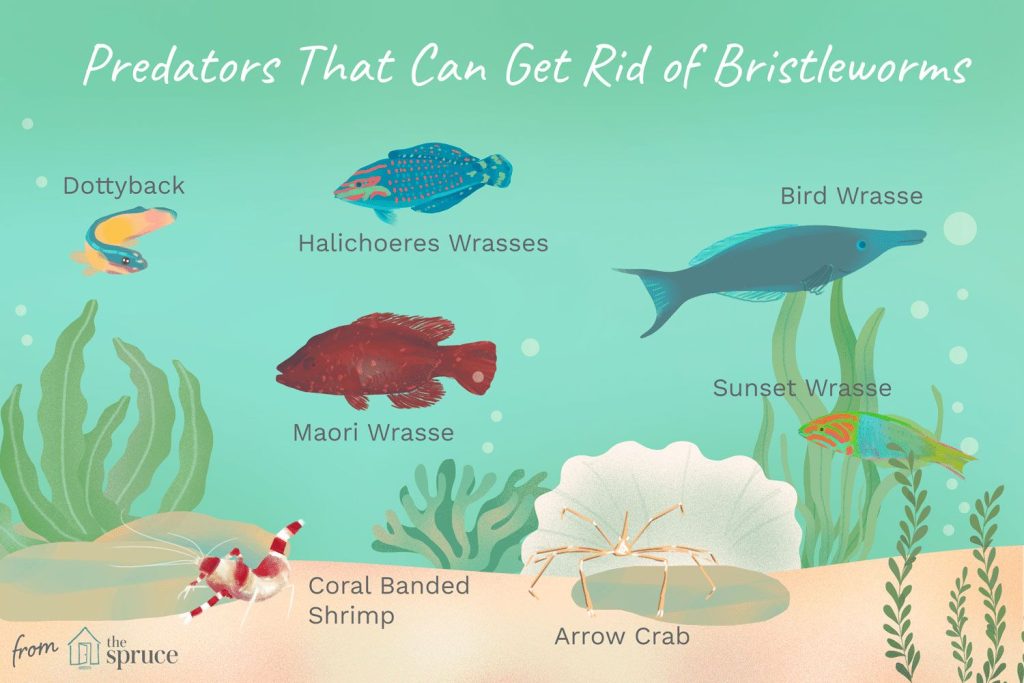
What happens if you touch a Fireworm?
Hermodice carunculata commonly known as fireworms are also some other kinds of worms and resemble a lot with bristle worms. They are native to the tropical Atlantic Ocean and the Mediterranean Sea and feed on soft and hard corals, anemones, and small crustaceans. These works can also be easily found in our surroundings and we can get in touch with them. But now the question that arises is what will happen if we touch a fireworm. If a fireworm ever touches you or stings you then the pain will last for a few hours and the irritation will likely last longer, but you will not die. The sting site will probably become red and inflamed, it may swell up, and you might experience some numbness in the area even after the pain subsides.
It can cause some skin problems but nothing serious will happen to you.
Difference between a Bristle worm and a Fireworm?
Bristle worms and fireworms resemble a lot with each other and it is very difficult to tell if they are different from each other. And you need to identify them because bristle worms are not harmful while fireworms are a different story and can be harmful and dangerous. You can know the difference between them based on their colour. Fireworms are identifiable by their red colouration. And the other thing is their bristles that are more “fluffy” looking in comparison to the Bobbit worm & common bristle worm. They are a little smaller than bristle worms as well.

Here is how you can know the difference between a good bristle worm and a bad bristle worm
Facts About Bristle Worms You Need to Know
Polychaetes are the kings of diversity
Diversity and biodiversity are the law of nature. Some living organisms have less diversity while some have a lot of variety and sub-divisions in them. And Polychaetes are the kings of diversity. This word is derived from a Greek word that means with much hair and the reason for that is they have a lot of hair and fringes on their body. They have a lot of variety in them. And each of these worms resembles them a lot as they have ahead, a tail, and a segmented body. Usually, each body segment has a pair of leg-like parapodia with spiny bristles sticking out.
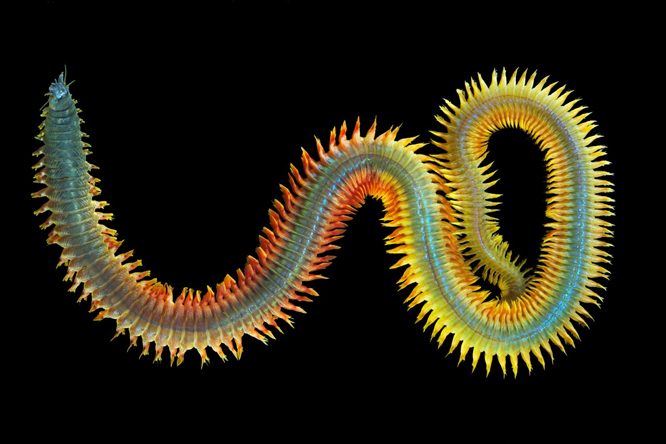
Oxygen is not a necessity for them up to 96 hours
Humans can’t even imagine their lives without oxygen and the same goes for a lot of other living organisms. But Oxygen is not a necessity for polychaetes up to 96 hours as they can survive without it for a very long time. A study was conducted to do so in which it was found that these worms can go without breathing for a very long time. The researchers also suspect that these polychaetes survive by feeding on free-living bacteria on the gas hydrate’s surface. They can also grow in bacteria and their main habitat is underwater.
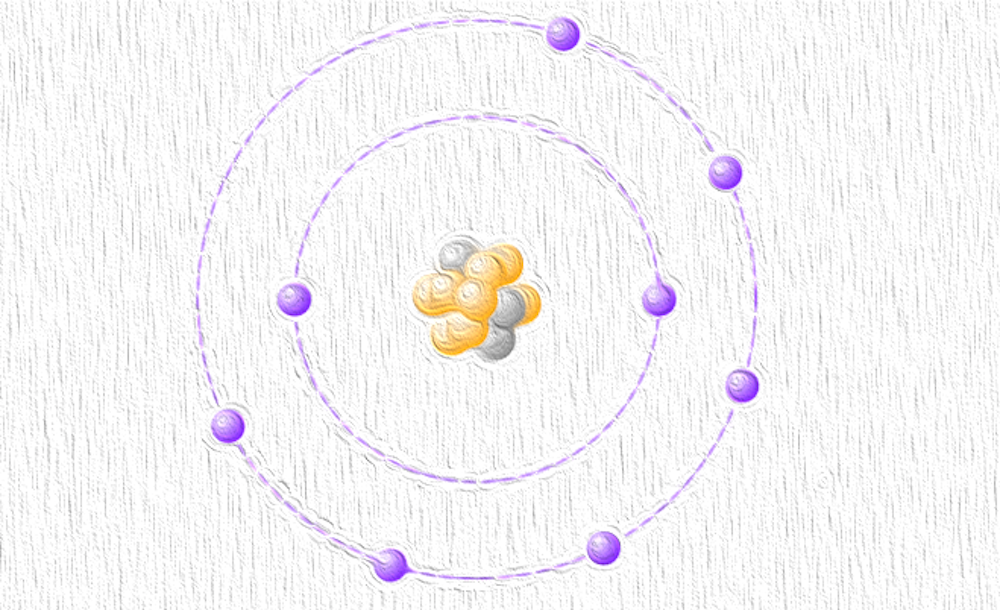
They can be as big as ten feet
The average height of a bristle worm is between one to six inches. They are slim and long creatures usually found in the marine world. But in some rare cases, their height can be as long as ten feet, and normally when they are in open water. Well, a ten feet long bristle worm with its lot of long fringes can look very scary for sure!! And this long body makes hunting for them even easier. As they can reach them with their long fringes.
Their Eyes can be super huge
A bristle worm has a very weird appearance and at first look, all you can see is its long body and hair, and this look makes us question that do they have eyes or not. But the fact is that they have eyes right on their prostomium and sometimes their eyes can be very huge. In fact, they have ave large complex eyes that rival the camera-like eyes of cephalopods and vertebrates. Their eyes have all the parts like Iris and lenses that make vision possible.

They have fought against five big extensions
Extensions mean when all the organisms of a type of category die and can not be found on planet earth anymore. From all the fossils that have been found it is concluded that bristle worms have been in existence for a very long time and some studies also show that they existed for 510 million years. And since then this planet has seen around five mass extensions in which more than 96% of marine creatures went extinct. But bristle worms were unaffected from them. And they have fought against their extinctions for their survival.
What is Squid Worm
How many worms are too many worms? Teuthidodrilus known by is name Squid worm is a species of acrocirrid marine annelid worms. They can be found only in the depths of the ocean as their columns lie between 2,039 to 2,912 m depths of the sea. They are very rare to be found on the top layers of the water which makes them unique. Squid worms can be grown up to 9cm in length and the main thing on which they feed are marine snow.
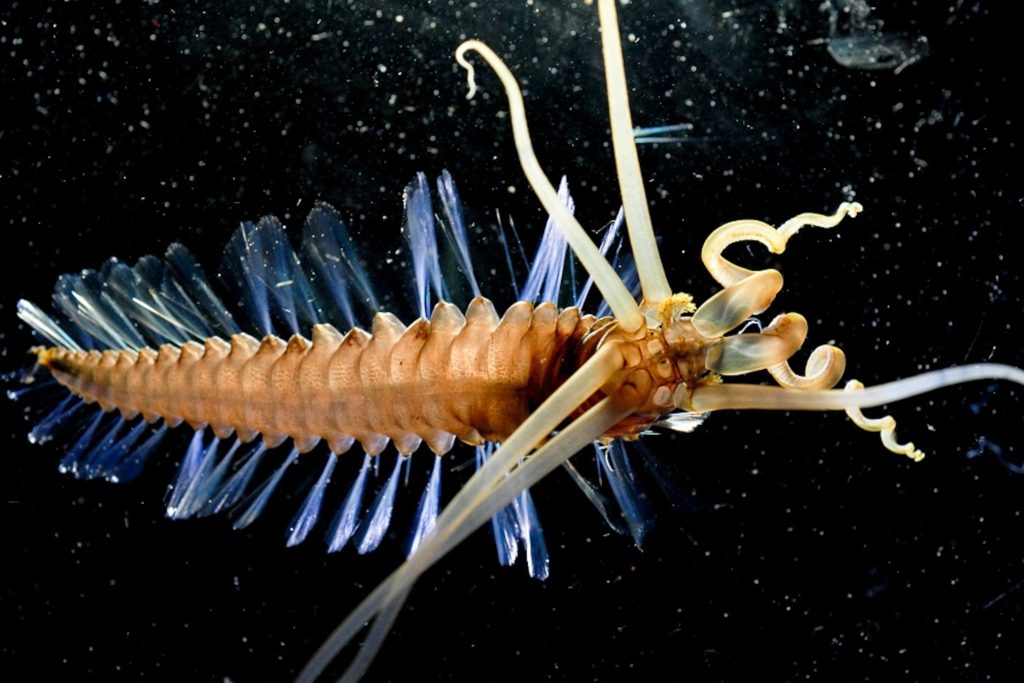
Connection of Worms and Zombies
They are not literally connected with but the thing that worms and zombies have a thing in common is feeding on dead bodies and their remains. They are also called the scavengers on the sea because their main food is marine creatures that are dead. These creatures also help in keeping their surroundings clean. They all fall under the category of five zombie worms.
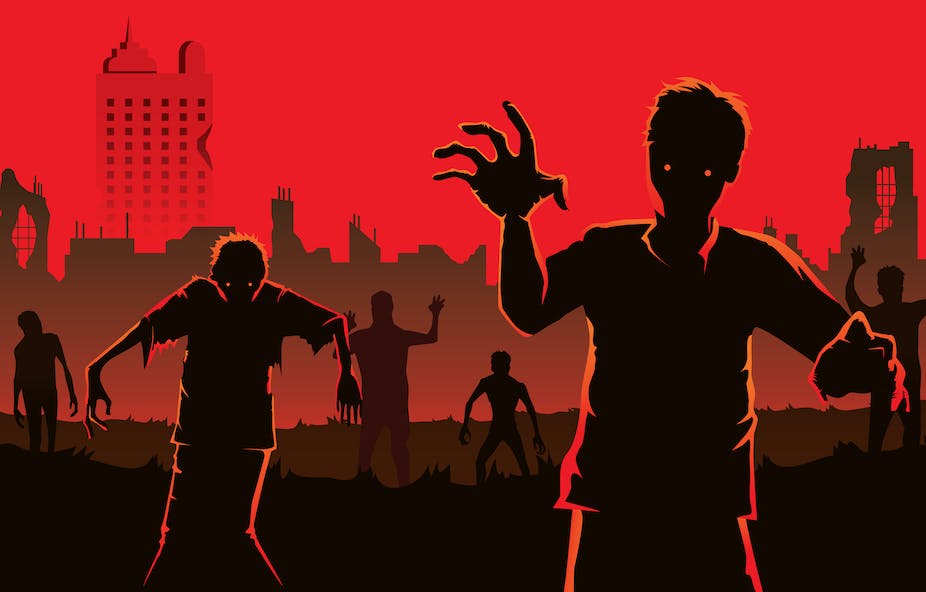
Worms and their mysterious family tree
Bristle worms are not the very first member of their family and have reached this point after a lot of generations and evolving. But their family tree is not very easy to understand as it is complex and mysterious. They have evolved into 10000 species from their existence till now. But all the members and their features are very difficult to understand which makes this family a little complex.
Bristle worms are Heat resistent
Heat and cold can not do much harm to bristle worms as they are heat resistant and that is why they can be found in extremely cold and extremely hot areas. Their body and skin are made in such a way that they can survive in very hot weather for a very long time, unlike many other creatures. They can survive even in boiling water which makes them one of the most heat-resistant creatures on the planet.
They are the Pillbugs of the Sea
Pillbugs are beetles that scale all over their body. They are similar to polychaetes in a lot of ways. Many are small, but there are some deep sea polynoids that can reach nearly a foot long, like the Eulagisca gigantic species found in Antarctica. The way they attack and feed is also very similar.

This video will help you to make a DIY bristle worm trap if worms have attacked your tank and you are clueless about what to do
FAQs Related to Bristle Worms
Q1. What role does bristle wormsplay in the ecosystem?
If there is a creature in existence then it will definitely be playing an important role in the ecosystem. Polychaete worms play a vital role in the backwater bio-diversity food chain, and they are also the source of feed for other animals, including amphibians, birds, and fishes. They are very important for the water bodies and also play a role in cleaning them.
Q2. Will horseshoe crabs eat bristle worms?
Being a prey and predator is part of the ecosystem. You eat some animals and some animals eat you. Same goes with bristle worms. Bristle worms eat a lot of other kinds of worms and there are many other creatures that eat bristle worms. Fish and invertebrates that hunt bristle worms down and eat them include Arrow crabs, Coral Banded Shrimp, Wrasses, Flame and Long Nose Hawkfish, Orchid Dottyback and Neon Dottyback, Gobbies, Copperband Butterflyfish, Goatfish, Horseshoe crabs, and some Pufferfish species.
Q3. Are bristle worms bad for your tank?
Bristle worms are basically of two types one of them is dangerous while one of them is completely safe. If you have the second type in your tank then you need not remove them because they can not harm you and are a type of helper to you. Because they are scavengers and consume uneaten food, detritus, and carrion in a saltwater aquarium. And are usually good for your tank and aquarium it’s just that they can look a little ugly and creepy. And if they are not poisonous then they can not harm your fishes as well.
Q4. Can bristle worms sting?
Bristle worms are one of the most dangerous species of worms. They are usually very calm and don’t sting or bite very often. But when handled they sting and their sting is dangerous. As they are long segmented worms they have a pair of bristles in each pair through which they sting. And their sting can penetrate through the skin. And that is why one must be very careful while handling them or removing them because wearing gloves or other such protectors can not be of very much help.
Q5. Are there any venomous worms?
We see a lot of worms some of which are not venomous while some can be. There are many worms that can be highly poisonous and dangerous for humans and other living organisms. Specifically, there are two groups of venomous annelids worms are the leeches and the blood worms. They can leave poison in our blood and can lead to blood clotting as well.
Q6. Do bristle worms have eyes?
Bristle worms have a very complex structure and have a lot of weird body parts like parapodium, palp, septum, dorsal blood vessels, lateral blood vessels, and many other things like that. And because of their not-so-usual appearance, people usually think that they do not have eyes because all we can see are different colored fringes all around their bodies. But the answer is that they have eyes and some worms can have extremely huge eyes as well. Their eyes are located above the peristomium and just below the palp.
Q7. Where are most Polychaetes found?
Polychaetes have their spread all around the globe because they can survive in any type of temperature be it very cold or very hot. But there are some areas where they are found in huge areas. Abyssal depths to shallow estuaries and rocky shores are the most common areas for them. They can also be seen in open and stagnant waters like pools, tanks, aquariums, and other things like this.
Q8. What are 2 of the more popular worms to come from the Polychaetes class?
Polychaetes are a very big family and have a lot of worms in them of many different types. Some of these worms are rare while some are found in huge numbers. Some of the most popular types of polychaetes worms are the lugworm (Arenicola marina) and the sandworm or clam worm Alitta. They are usually found in widespread numbers in cold oceans or areas which have very high temperatures.
Final Thoughts on Bristle Worms
A lot of times when we look at some weird creatures and think about what role do they play in the environment. Our mind gets filled with a lot of different types of questions like what do they eat, how do they survive, are they poisonous, is it safe for humans to touch them or not, and many different things like that. But it will not be wrong to say that every small and big creature has a role to play. Bristle worms are one such type of creature and can be found very easily in our surroundings. They can be seen in your water tank, fish tank and the thing that makes them unique is that they can survive in extremely cold areas as well as extremely hot areas as well.
But sometimes when we look at things we get very curious about them, this article will help you in finding out answers to all the questions that might come to your mind after looking at bristle worms. You will also be able to know about how you can get rid of them if they are in huge number or are of harmful type.
Share with your friends






